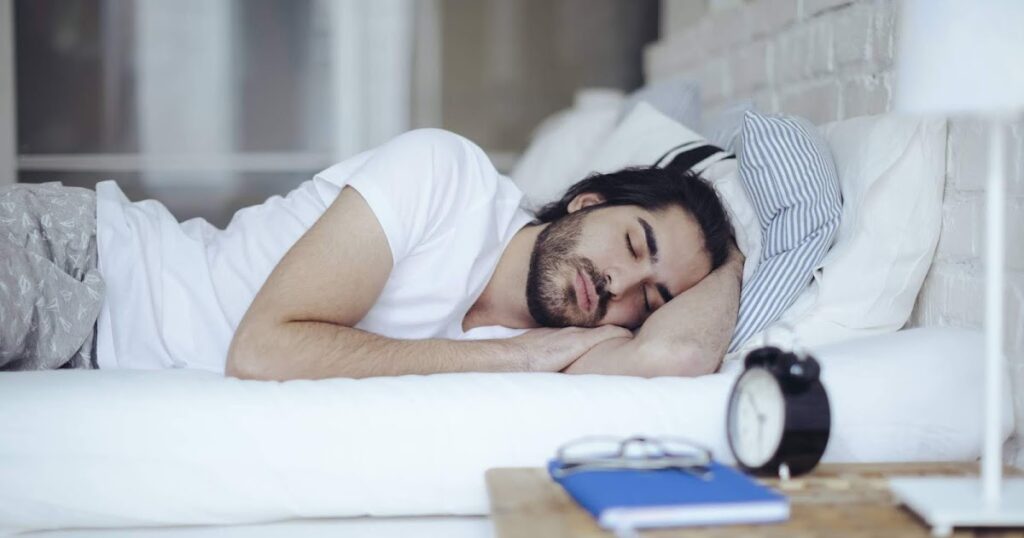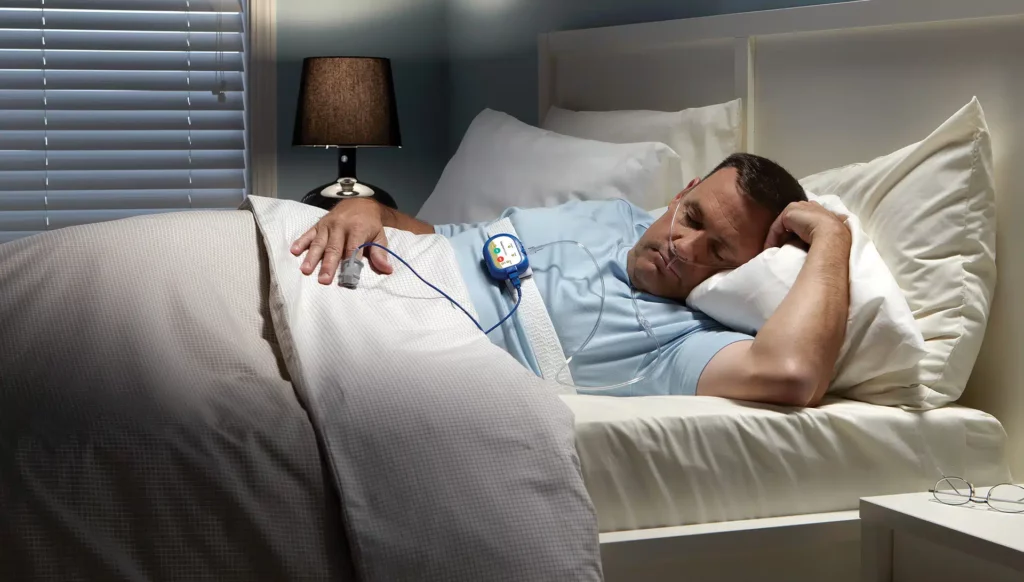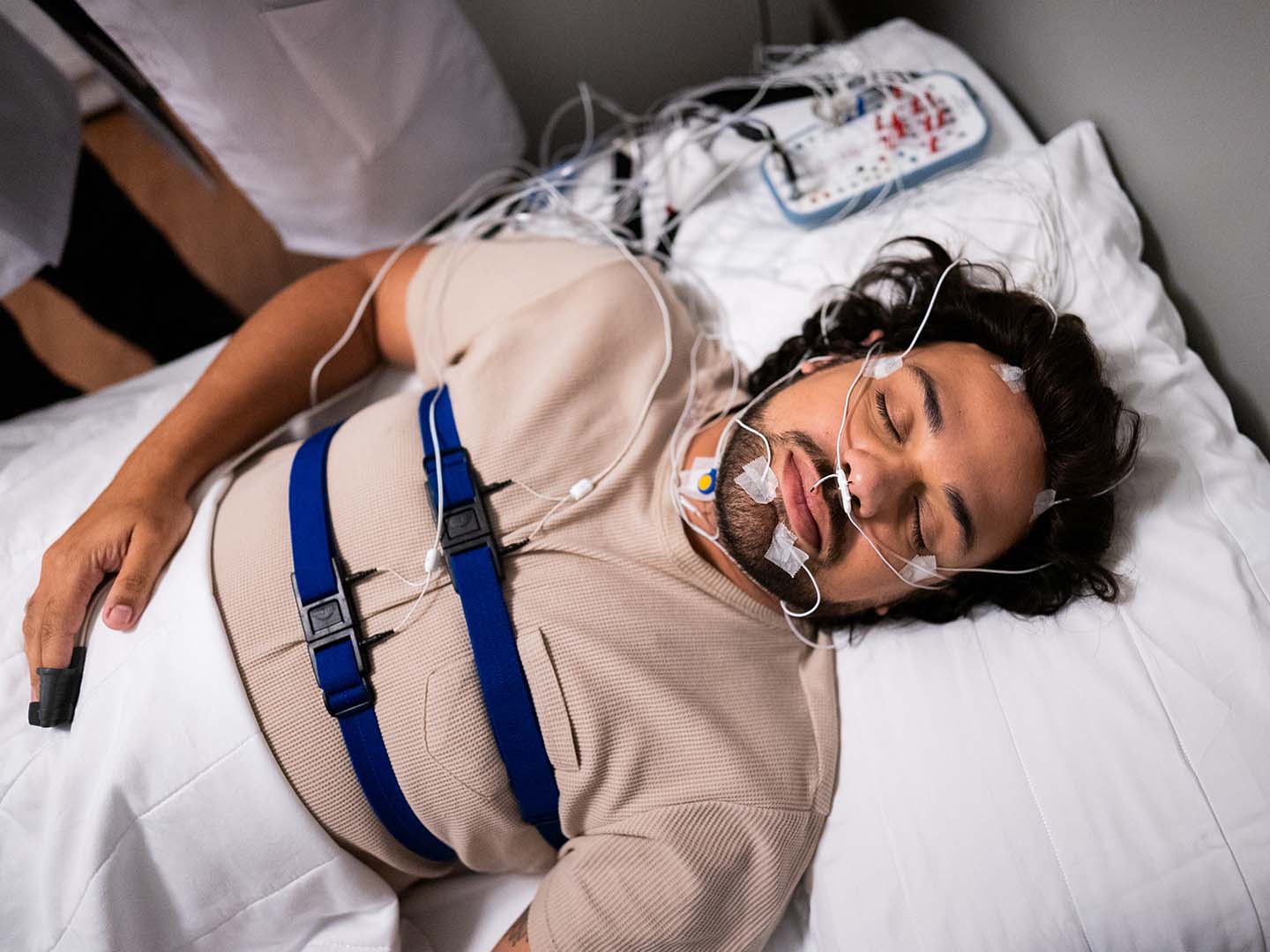What Is a Sleep Study and Why Is It Conducted at Hornsby?
A sleep study, medically termed polysomnography, is a comprehensive diagnostic test that monitors multiple body functions throughout the night to identify sleep-related disorders. This non-invasive procedure records brain waves, heart rate, breathing patterns, oxygen levels, eye movements, and leg movements whilst you sleep.
The polysomnography test serves as the gold standard for diagnosing various sleep conditions:
- Sleep apnoea – repeated breathing interruptions during sleep
- Narcolepsy – excessive daytime sleepiness and sudden sleep attacks
- REM behaviour disorder – physical acting out of dreams
- Periodic limb movement disorder – involuntary leg twitching or jerking
Hornsby sleep clinic provides a specialised facility designed specifically for accurate sleep monitoring. Conducting studies in a controlled environment offers distinct advantages over home testing. The laboratory setting ensures precise electrode placement, real-time monitoring by trained technologists, and immediate intervention if safety concerns arise during the night.
The sleep study purpose extends beyond simple diagnosis. Results guide treatment decisions, determine appropriate CPAP pressure settings for apnoea patients, and establish baseline measurements for tracking condition progression. Specialised centres like Hornsby maintain standardised protocols and equipment calibration, ensuring consistent, reliable data collection that physicians trust when developing your personalised treatment plan.
What Should Patients Bring to Their Sleep Study at Hornsby?
Patients should bring comfortable two-piece pajamas, prescribed medications with a current medication list, and all relevant paperwork including insurance information, referral letters, and ID cards. These sleep study essentials form the foundation of your sleep study checklist and ensure a smooth check-in process.
Essential items include:
- Comfortable sleepwear that allows electrode placement
- Current medications in their original containers
- CPAP or breathing machines with masks if you use these devices
- Prior sleep study reports if you’ve undergone testing before
- Insurance documentation and identification
Are There Any Optional Items That Can Improve Comfort?
Personal toiletries help maintain your regular bedtime routine, which is crucial for accurate results. Bring your toothbrush, toothpaste, floss, and makeup remover to feel refreshed before and after the study. Shampoo and a hairbrush are useful since you’ll need to wash electrode adhesive from your hair the following morning.
Comfort items for sleep clinic visits that can enhance your experience:
- Your own pillow or blanket from home creates familiarity in an unfamiliar environment
- Socks or slippers keep your feet warm when moving around the facility
- Reading materials or electronic devices with chargers help you relax before sleep
- Light snacks if you typically eat before bed
Children benefit from bringing comfort items like stuffed animals or favourite toys. These familiar objects reduce anxiety and help young patients settle into the sleep laboratory environment. Parents should also pack any asthma medications, including nebulizers and spacers, along with the child’s CPAP or BiPAP masks if applicable.
What Items Should Be Avoided During a Sleep Study?
Leave jewelry and excessive valuables at home to prevent loss or theft during your overnight stay at the sleep clinic. The sleep study checklist specifically excludes these items due to safety concerns, as you’ll be moving during sleep and technicians need clear access to your body for electrode placement.
Pets are not allowed in the facility, regardless of emotional support status. Sleep clinics maintain strict hygiene protocols and controlled environments essential for accurate diagnostic testing. Hairpieces and wigs should also remain at home, as they interfere with scalp electrode adhesion required for monitoring brain waves.
When reviewing what not to bring to your sleep study Hornsby appointment, remember that sleep study essentials focus on medical necessity and basic comfort rather than personal belongings. The facility provides a secure environment, but cannot guarantee protection of valuable items during your stay.
How Should Patients Prepare Physically and Mentally Before the Sleep Study Night?
Preparing for sleep study night requires specific adjustments to your daily routine. Avoid all caffeine-containing beverages and foods from midday onwards, as stimulants can significantly disrupt your natural sleep patterns and compromise test accuracy. Alcohol consumption should be eliminated entirely on test day, despite its sedative properties initially making you drowsy, it fragments sleep cycles and produces unreliable data.
Physical preparation sleep test protocols demand you skip afternoon naps, regardless of how tired you feel. Arriving at the sleep centre naturally fatigued ensures you’ll fall asleep more easily under unfamiliar conditions with monitoring equipment attached. This authentic tiredness provides technicians with genuine sleep behaviour patterns rather than artificially induced rest.
In addition to these requirements, it’s crucial to understand the importance of mental preparation. Engaging in relaxation techniques such as deep breathing or meditation can significantly reduce anxiety levels, fostering a more conducive environment for sleep. It’s also beneficial to familiarize yourself with the sleep study process, which can alleviate apprehensions about the unknown.
Wash your hair thoroughly but leave it product-free—no hairspray, gels, or oils that interfere with electrode adhesion. Similarly, avoid applying lotions, creams, or makeup to your face and body. Clean, dry skin allows monitoring sensors to maintain proper contact throughout the night, capturing accurate readings of your brain waves, breathing patterns, and body movements during different sleep stages.

What Is the Recommended Routine Upon Arrival at the Sleep Center?
Patients should arrive approximately two hours before their scheduled bedtime at the sleep center Hornsby. This window allows sufficient time for the check-in process, completing any remaining paperwork, and receiving a thorough orientation of the facility and procedures.
Upon arrival, staff will guide you through administrative tasks before showing you to your private room. The technician will explain what to expect throughout the night and answer any questions about the monitoring process.
The polysomnography electrode application process begins once you’ve settled in and changed into your sleepwear. Technicians attach small sensors to specific locations:
- Scalp electrodes to monitor brain wave activity and sleep stages
- Chest and abdominal bands to track breathing patterns and effort
- Finger probe to measure oxygen levels in your blood
- Leg sensors to detect limb movements
- Face and chin electrodes to record eye movements and muscle activity
The arrival instructions at the sleep center Hornsby emphasize that this setup process typically takes 30-45 minutes. Technicians ensure all sensors are properly positioned for accurate data collection without causing discomfort during sleep.
How Does CPAP or PAP Therapy Integration Work During the Study?
Does the sleep centre handle CPAP equipment during the overnight assessment? Yes, CPAP fitting Hornsby sleep study protocols include a dedicated mask fitting and testing session before your overnight monitoring begins. Technicians work with patients who require breathing devices to ensure proper seal and comfort, addressing any concerns about pressure settings or mask style.
The PAP therapy polysomnography integration occurs in two distinct phases:
- Preparation phase: Technicians assess your current equipment or introduce new devices if you’re beginning treatment. They’ll adjust straps, test different mask sizes, and verify that air pressure flows correctly without leaks. This preparation typically takes 20-30 minutes.
- Monitoring phase: During the actual sleep study, the positive airway pressure device runs continuously whilst electrodes monitor your response to treatment. Technologists observe how effectively the therapy reduces apnoea episodes, oxygen desaturation events, and sleep disruptions. This data determines whether your current pressure settings require adjustment or if alternative therapy modes would better address your specific breathing patterns throughout different sleep stages.
Patients should bring their existing CPAP machines and masks to maintain consistency with home routines, though the facility provides backup equipment if needed.

What Special Considerations Exist for Pediatric Patients Undergoing Sleep Studies?
Children undergoing polysomnography at Hornsby require additional preparation to ensure accurate results and emotional comfort throughout the night. Parents should pack all respiratory medications their child uses regularly, particularly asthma inhalers, nebulizers, and spacer devices that may be needed during the study.
Essential items for paediatric sleep study preparation Hornsby include:
- All prescribed respiratory medications and delivery devices
- Child’s CPAP or BiPAP mask if currently using one for treatment
- Favourite comfort items such as stuffed animals, blankets, or toys
- Familiar pyjamas and morning clothes
- Bedtime storybooks or calming activities
The sleep centre permits one parent or guardian to stay overnight in the room with the child, providing reassurance during electrode application and throughout the monitoring period. This parental presence significantly reduces anxiety and helps children maintain their normal sleep patterns, which is crucial for obtaining accurate diagnostic data during children polysomnography guidelines.
Ready to schedule your child’s sleep study at Hornsby? Contact the sleep centre today to discuss your child’s specific needs and receive a comprehensive preparation checklist tailored to paediatric patients.
More to Read : Sleep Testing in Dee Why: Is At-Home Testing Suitable for Light Sleepers?
FAQs About Sleep Studies in Hornsby
A sleep study helps diagnose sleep disorders such as sleep apnoea, narcolepsy, and restless leg movements by monitoring your brain, breathing, and heart activity overnight.
2. Why should I choose a Hornsby sleep clinic for my study?
Hornsby sleep clinics provide controlled environments, advanced equipment, and trained technologists to ensure accurate and reliable results.
3. What items should I bring to my sleep study appointment?
Bring comfortable pajamas, your prescribed medications, identification, insurance details, and any CPAP equipment you already use.
4. Are there optional items that can make my stay more comfortable?
Yes—personal toiletries, your pillow or blanket, and light snacks can make you feel more relaxed during the night.
5. What should I avoid bringing to the sleep clinic?
Avoid bringing valuables, jewelry, wigs, or pets, as these can interfere with the study or risk being misplaced.
6. How should I prepare before the sleep study night?
Avoid caffeine and alcohol, skip daytime naps, and arrive with clean, product-free hair and skin to help sensors adhere properly.
7. What happens when I arrive at the Hornsby sleep center?
You’ll check in, complete paperwork, and have sensors attached to monitor brain waves, breathing, and movement during sleep.
8. How is CPAP therapy integrated into the sleep study?
Technicians test and adjust your CPAP or PAP device before and during the study to evaluate how effectively it controls breathing interruptions.
9. Are sleep studies safe and suitable for children?
Yes—Hornsby sleep centers offer pediatric sleep studies, allowing a parent to stay overnight to ensure the child’s comfort and accurate results.
